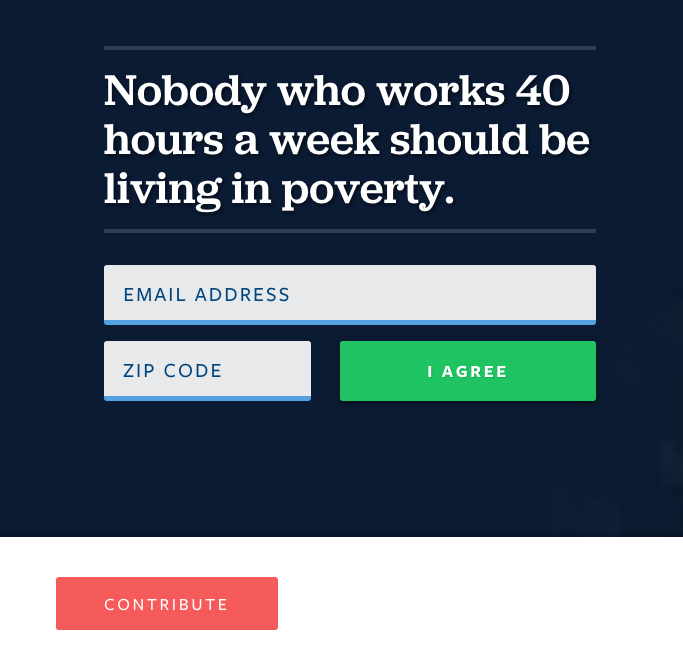With the presidential elections fast approaching, you’re probably busy weighing the similarities and differences between candidates. But, as a nonprofit, you can take away a lot more from election season than simply knowing where candidates stand on important issues. Turns out, you can learn a lot about how to improve your very own fundraising strategies.
That’s right—presidential hopefuls like Bernie Sanders and Hillary Clinton employ drastically different fundraising tactics in order to foot the hefty bill for their campaigns. And, there’s a lot to be learned from the varying systems they utilize.
As this New York Times article reports, so far Sanders has raised approximately $96 million to Hillary’s whopping $188 million ($127 million of which has come from individual donations). But, while he’s still behind financially, he’s quickly closing that gap—in fact, he raised $5 million more than she did last month.
How’s he gaining traction? As the New York Times piece continues, it becomes evident that Sanders’ fundraising strategy—which, in all honesty, he sort of just stumbled into with the help of a young and eager digital team—relies much more on small donations made online by his more than 1.3 million backers.
This starkly contrasts Clinton’s tactic—which goes after those $2,700 maximum contributions from individuals with much deeper pockets.
“The competition between Mr. Sanders and Mrs. Clinton is as much about a collision of fundraising cultures as it is about dollars,” the article eloquently explains. So, what tangible things can you learn from these contrasting strategies that are playing out head-to-head in front of the entire nation?
Here are four big takeaways you can use to benefit your own nonprofit’s fundraising campaigns.
1. Don’t Forget Your Smaller Donors
As perhaps one of the biggest lessons illustrated by these different campaign strategies, you simply can’t neglect your smaller donors. A few dollars here and there might seem unhelpful and insignificant, but those minor contributions can really add up over time.

As a matter of fact, small donors account for 76% of Sanders’ overall campaign contributions. See? That’s a huge chunk of his overall funds, all coming from pretty small donations. Sanders said himself in a news release from this past July, “I am proud that we have more than 284,000 individual donors and that the average contribution was about $35.” Since then, his average donation has decreased to right around $27 per person.
Yes, $27 is a long way away from $2,700, which is the maximum contribution allowed in the primary campaign. But, Sanders proves that if you get enough people willing to provide even minor support of your cause, that can really have a huge impact.
Even further, there are likely many people out there who are totally behind your cause—but that doesn’t mean they have huge amounts of cash to support it. By valuing even the smallest of donations, you’re fostering a spirit of community and collaboration, rather than materialism and competition.
We place a lot of emphasis on identifying your key donors, and that’s undoubtedly still important for scoring those large checks. However, take a note from Sanders and remember that you shouldn’t compromise your entire fundraising community for the sake of throwing all of your time, energy, and attention into a few major contributors. You’re better off spreading the love.
2. Donors Like Convenience
We’ve said it time and time again, but it’s a point that bears repeating—you need to make it as easy as possible for donors to support your cause.
When they’re already opening their wallets in order to help you out, they don’t want to be sent on a wild goose chase trying to figure out exactly how to give you their hard-earned money. That part should be slick, simple, and painless.
The Clintons have built up somewhat of a dynasty when it comes to their fundraising model, and it follows a much more traditional approach—meaning there’s a lot more wining and dining of wealthy contributors.
This means that Clinton is able to score large donations from these well-to-do individuals, but it also means she had to put quite a bit on the table herself—including resources, travel time, and tons of planning and coordination.
In contrast, Sanders’ model is much more barebones and cut and dried. The majority of his donations are completed by credit card right on his website. Directly on the homepage, visitors are greeted with a large, red “Contribute” button—further proof that a strong and direct call to action is absolutely necessary when it comes to successful fundraising.
 After clicking that, donors are walked through a few simple steps to select their donation amount, enter their personal and payment information, and their contribution is finished. It’s simple, efficient, and incredibly effective.
After clicking that, donors are walked through a few simple steps to select their donation amount, enter their personal and payment information, and their contribution is finished. It’s simple, efficient, and incredibly effective.

So effective, in fact, that following Sanders’ speech after winning the New Hampshire Democratic primary, people couldn’t flock to his website fast enough. As the New York Times reports, in just one minute alone, 2,689 people had donated an average of $34.
What’s the bottom line? You need to make donating to your cause as convenient, easy, and pain-free as possible. After all, supporters don’t want to have to jump through hoops in order to give you their money. Even further? You need to explicitly ask for funds with a can’t-miss call to action. It’s a crucial element of successful fundraising.
3. Know Your Audience
So, what inspired Sanders’ more modern approach to fundraising? You could argue that his young digital team has a lot to do with it. But, beyond that, he’s in touch with what his audience wants.

He recognizes that he appeals to a much younger crowd than Clinton does. This knowledge is important to his campaign for a couple of different reasons:
- Knowing that Millennials make up a significant portion of supporters, he was then able to recognize that these people eat, sleep, and breathe online. His team knew that he needed to be incredibly active in that space—including a social media presence and easy, online credit card transactions—in order to be effective.
- Because he was appealing to a significantly younger core group of supporters, it also quickly became obvious that this likely isn’t a demographic with a large disposable income to throw at the causes they care about. Donations would be in smaller amounts, and they needed to value those as much as the big donations.
- Crowdfunding practices have gained in popularity over recent years, and Sanders added this powerful tool to his own belt by implementing things like donation deadlines. He recently announced a flash fundraiser with a goal of raising $3 million. The kicker? He brought in $2 million with that tactic—in just the first six hours.
This information then allowed Sanders and his team to tailor their approach, tactics, and communication strategies in order to best suit his audience. Needless to say, being informed about who exactly you’re targeting with your campaign and fundraising messaging is important. It’s difficult to effectively communicate if you have no idea who exactly you’re talking to.
4. Balance is Crucial
It’s evident that Sanders’ fundraising model is effective, allowing him to quickly gain ground on Clinton’s funds. But, at the end of the day, it’s important to recognize that in the grand scheme of things, he’s still a little behind financially.
The lessons you can take away from Sanders’ approach are important, and definitely things that you should put into play for your own campaigns. However, that doesn’t necessarily mean you should mimic his tactics and strategies to a T.
It’s important to remember that Sanders’ strategies have a lot more to do with his own political fundraising ethics—like the fact that he won’t take funds from SuperPACS—which isn’t necessarily a lesson you can apply to your own nonprofit. Instead, aiming for a healthy balance between Sanders’ and Clinton’s methods is likely your best bet for success.
What does all of this mean for you? Quite simply, you should undoubtedly make an effort to pay more attention and show more appreciation for your smaller donors—not just the ones who hand over checks with multiple zeros.
However, that also doesn’t mean that you should totally shift your focus and forget those big donors altogether. They’re still a key component of your fundraising base.
You need to strike that happy medium between the two philosophies and manage a healthy balance. It’s difficult to keep everybody engaged and happy at all times, but you can certainly try your best!




